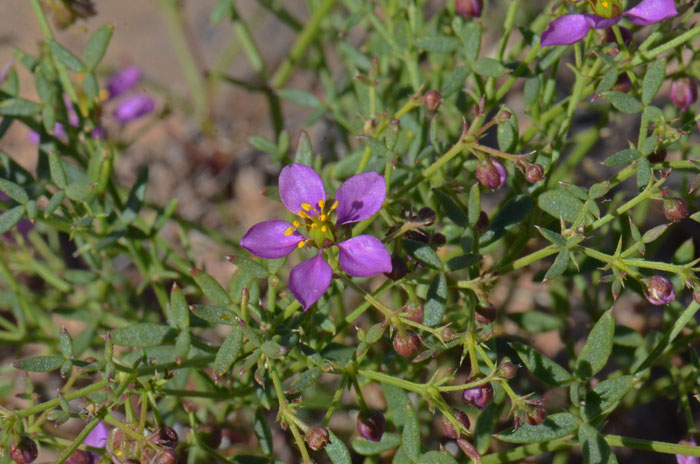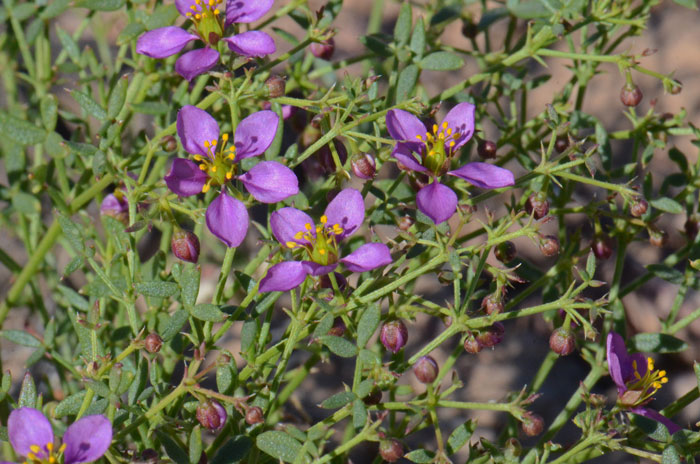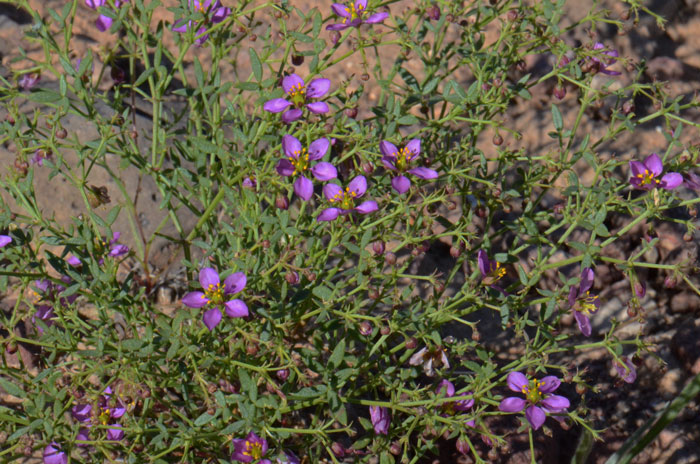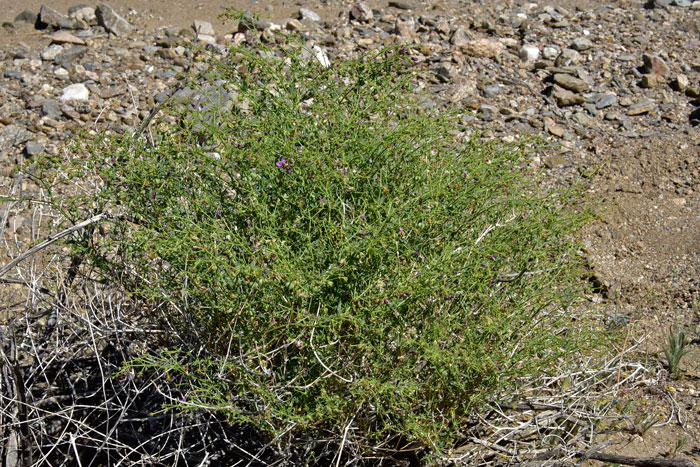Fagonia laevis, California Fagonbush




Scientific Name: Fagonia laevis
Common Name: California Fagonbush
Also Called: California Fagonia
Family: Zygophyllaceae, Caltrop Family
Synonyms: (Fagonia californica, Fagonia californica subsp. californica, Fagonia californica subsp. laevis, Fagonia californica subsp. longipes, Fagonia californica var. laevis, Fagonia californica var. longipes, Fagonia longipes)
Status: Native
Duration: Perennial
Size: Up to 2½ or so.
Growth Form: Shrub, subshrub; plants shrubby, suffrutescent; intricately branched.
Leaves: Green; compound trifoliolate or trifoliate, leaflets entire; spiny stipules.
Flower Color: Purple; fruit smooth, rarely glabrous.
Flowering Season: January to April; March-May and November-January in California.
Elevation: Up to 2,500 feet.
Habitat Preferences: Frequent on dry, rocky hillsides, slopes, mesas and sandy washes.
Recorded Range: Fagonia laevis is found in the southwestern United States in AZ, CA, NV, UT. It is also native to Baja California and northwest Mexico. In Arizona it is found in Coconino County in the north-central part of the state, the southwest part of the state and in the central-east in Graham County.
North America & US County Distribution Map for Fagonia laevis.
U.S. Weed Information: No information available.
Invasive/Noxious Weed Information: No information available.
Wetland Indicator: No information available.
Threatened/Endangered Information: No information available.
In the Southwestern United States: Arizona and California each have 2 species of Fagonia, Nevada and Utah each have 1 species and New Mexico and Texas have 0 species. All data is approximate and subject to taxonomic changes.
Comments: Fagonia laevis is a delicate, relatively small, plant with numerous showy flowers that grows in dry areas in the desert. Sufficient periodic rainfall is necessary. The plant leaves are small and the stems are thin and each has a protective waxy covering helping the plant survive extreme arid conditions.

